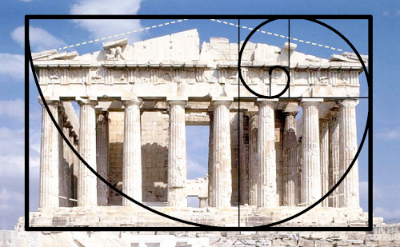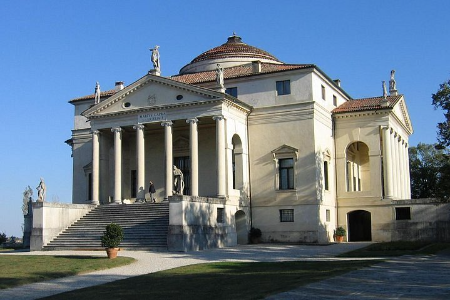core concept throughout history of architecture
Parthenon
"The Parthenon is is based on the golden section."
Disclaimer:
This proportion doens't match. More: in Greek thought proportions of integers are central.
A reference in the analysis of the dimensions and proportions of the Parthenon is te doctoral study by Anne Bulckens. As well the plan as the facade are based on the ratio 9 : 4, even though the internet is full of pictures on which thick lines are drawn in a golden rectangle.
More about the Parthenon you can find on the page The Parthenon in numbers.

Renaissance
"In Renaissance the golden section plays a key role."
Disclaimer:
This claim is false. 15th and 16th century publications are very explicit about it.
As in Leonardo's Vitruvian man also in architecture integers play a key role.
In their tractateq Alberti and Palladio are very clear.
This is the very simple reason why, although associating the GR with renaissance, one never shows pictures of the iconic works by Brunelleschi, Alberti or Palladio and why one never quotes them.
You can read more about it on the page Renaissance.

Le Corbusier
"Le Corbusier is an illustration of het use of the golden section in modern architecture".
This is true!
The reason for this however are troubled. Le Corbusier read the publications in which the false claims by Zeising in 1854 were shared and sustained. Because Le Corbusier believed the statements by Zeising about the role of the golden section in the history of art and the key link between math, the human body and nature, he developed a modular system as starting point for his own work.
